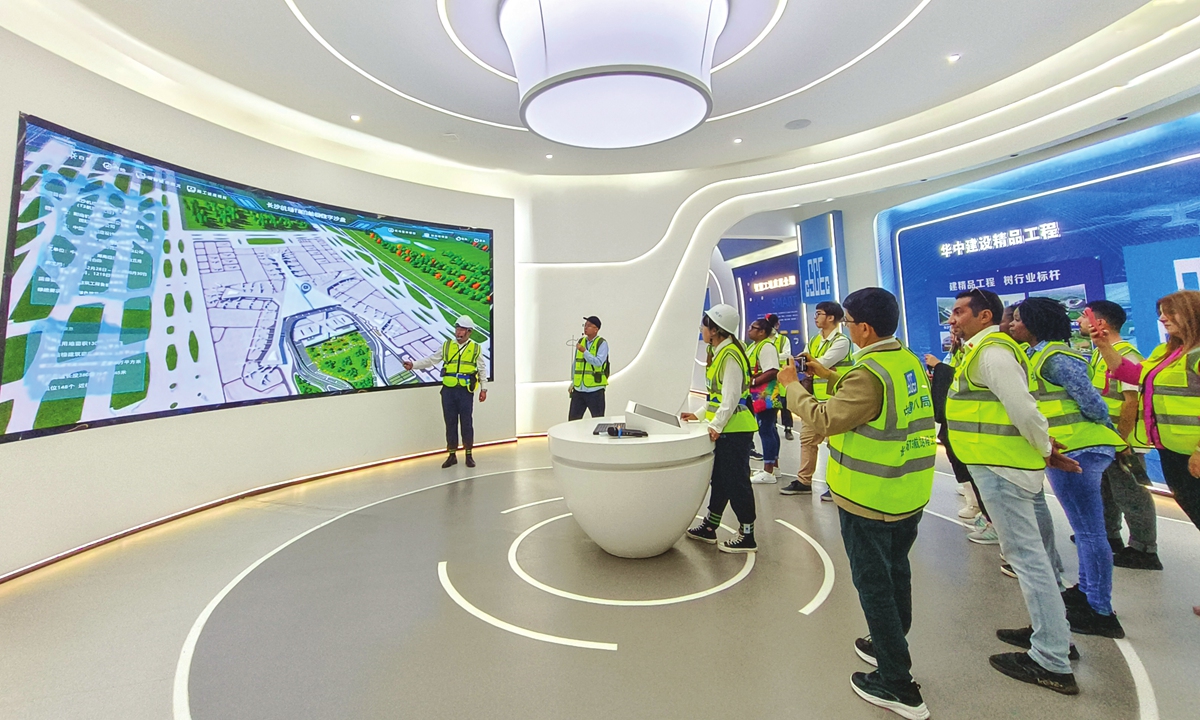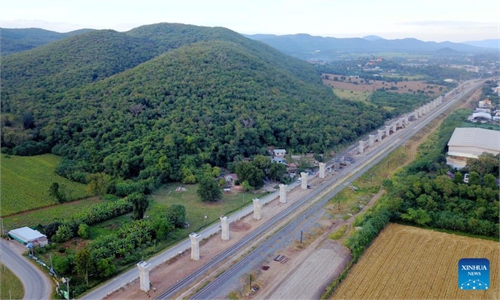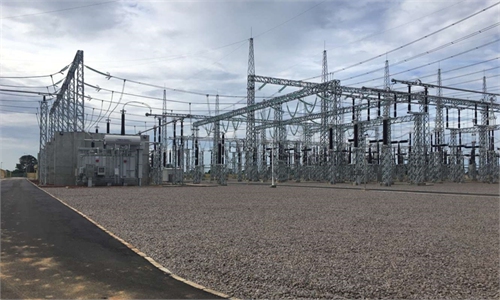Future cooperation in new-energy projects under BRI to contribute to a cleaner future: foreign media

Foreign journalists from BRI partner countries visit the T3 terminal project at Changsha International Airport in Changsha, Central China's Hunan Province on October 25, 2023. Photo: Qian Jiayin/GT
After journalists from Belt and Road Initiative (BRI) partner countries entered Chinese cities and villages to experience China's infrastructure construction and witness the country's green energy transformation and development, they marveled at China's infrastructure achievements and expressed hopes that the Chinese experience could help accelerate their own countries' development.
From October 20 to 28, the "Belt and Road" Media Cooperation Forum's international press corps visited selected cities in China, including Beijing, Changsha, Xinyu, Zhangshu, and Wuhan.
Journalists from five continents including Nepal, Pakistan, Fiji, Vietnam, Indonesia, Cambodia, Hungary, Armenia, Chile, Argentina, Benin, Guinea, the Central African Republic and Burkina Faso participated in the event. Some of them have been to China before, while others are visiting for the first time. Codjo Amoussou, director of Benin's public media, La Nation, told the Global Times that he enjoyed the visit, and he fell in love with the modern and authentic China.
Infrastructure build-up
At the construction site of the T3 terminal project at Changsha International Airport, the journalists witnessed with their own eyes how China has leveraged advanced technology to vigorously and rapidly promote the construction of a green and low-carbon terminal that is scheduled to be put into operation in 2026.
The T3 terminal project of Changsha International Airport of China State Construction Engineering Corporation is currently the largest infrastructure project in Central China's Hunan Province. The total construction area of the T3 terminal is approximately 500,000 square meters.
The person in charge of project construction told the reporters that the construction was steadily progressing, and the topping out of the concrete main structure in the area, unaffected by the construction of other transport projects at the transport hub, including the terminal, was completed on September 30. He also said the first-area grid lifting, an important milestone, would be completed by October 31.
Foreign journalists from BRI partner countries visited the smart exhibition hall, safety experience center, and observation tower and also visited the exhibition areas showcasing green construction, safety management, quality benchmarks, and optimization models, gaining an in-depth understanding of various details and measures during the construction process. In the safety experience center, several foreign journalists showed great interest in the VR experience of the construction site. Codjo Amoussou, the director of Benin's public media, La Nation, said that it was a very novel experience.
Building a green and low-carbon terminal is one of the important concepts behind the new T3 terminal project of Changsha International Airport.
Currently, the project has adopted 50 green construction techniques, achieving green and low-carbon construction through the utilization of renewable energy such as solar panels. Foreign reporters experienced the digital sand table in the smart exhibition hall, experiencing how Chinese construction uses digitalization to monitor real-time data on various green construction indicators such as construction site noise and dust.
Sitaram Baral, a magazine editor at Nepalkhabar.com, told the Global Times that he knew Chinese construction companies had projects in Nepal. The KTFT Expressway project is currently the longest highway tunnel project being built in Nepal. He is very interested in understanding how Chinese construction projects are built and hopes that Chinese infrastructure can continue to invest in Nepal through the joint construction of the BRI.
Anahit Sargsyan, an international news editor at the information-analytic agency NEWS.am, said that the level of modern technology used in China has surprised her. The company's safety standards, concern for the workers' health, and the entire airport project have impressed her. "After the completion of the terminal, I really want to come and see what it looks like," Sargsyan said.
Smart carbon control
In Xinyu city, East China's Jiangxi Province, foreign journalists visited the Xinyu power generation plant. In China, photovoltaics have surpassed hydropower to become the country's second-largest electricity source. Foreign journalists visited the Fenyi administrative service center and the Fenyi power plant there, experiencing up close the exploration of green, clean, and low-carbon transformation done by Chinese energy companies.
The Xinyu smart power plant is one of the 155 integrated intelligent power plants developed by State Power Investment Corporation Limited (SPIC). Currently, the plant has put into operation four units with a total installed capacity of 6.96 megawatts.
At the Fenyi administrative service center, foreign journalists climbed to the top floor of the office building, where photovoltaic panels on the roofs and carports attracted everyone's attention. The guide from SPIC explained that they installed 8,119 photovoltaic modules on the roofs of office buildings, dormitories, canteens and other buildings. The panels not only provide electricity for the entire office building but also help solve the charging problem for employees' electric vehicles through the supporting construction of photovoltaic carports and charging terminals. The green electricity generated there can be supplied to surrounding residents.
"This power plant is large and well-equipped. It is the best one I have ever seen. This visit has been an excellent experience for me," Mortada Abdelkhalik Abdelaziz Taha, the manager from Kuwait Alarab, said at the Fenyi power plant.
In an exhibition hall of the Fenyi power plant, the guide introduced some projects including a light storage charging and discharging inspection project. These photovoltaic facilities aggregate relatively dispersed elements such as power generation, grid, load, and storage through a set of smart systems.
"The light storage charging and discharging inspection project and the power plant that I visited have left a deep impression on me. I think photovoltaic projects are important for West African countries. Under the framework of the BRI, technology sharing between China and African countries and bilateral cooperation will enjoy a brighter future," Yameogo Benewende Nadege, a journalist from Burkina Faso, told reporters.
At China Energy Engineering Group Co (CEEG) in Beijing and the Zhuzhou Qingshuitang Bridge in Central China's Hunan Province, infrastructure projects constructed by China overseas have left a deep impression on foreign journalists.
"There are projects of new-energy power plants in the BRI that span the continents of Asia, Africa, and South America, which help countries produce power while creating a better environment," Ebraheem Faisal Malik, Social Media Manager of The Daily CPEC from Pakistan, told reporters.
In Pakistan, the Neelum-Jhelum Hydropower Project, constructed by CEEG, is often referred to as the "Three Gorges Project of Pakistan."
Malik said that new-energy projects in the BRI are a positive development both for the countries involved and for the world. "I am very optimistic that future cooperation on new-energy projects under the BRI will help create a cleaner and more sustainable future for all of us."


